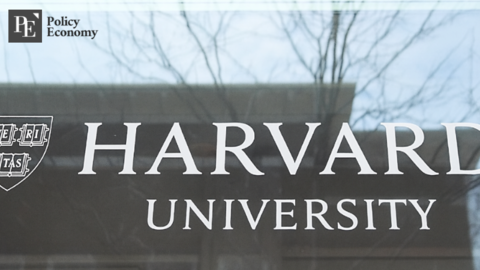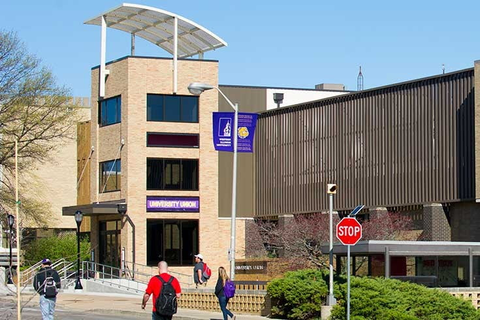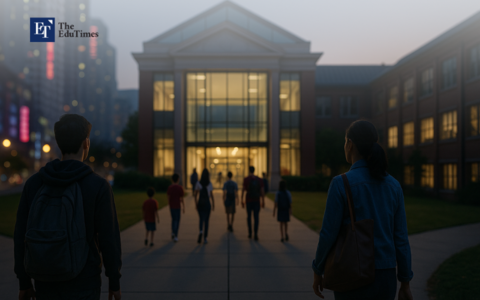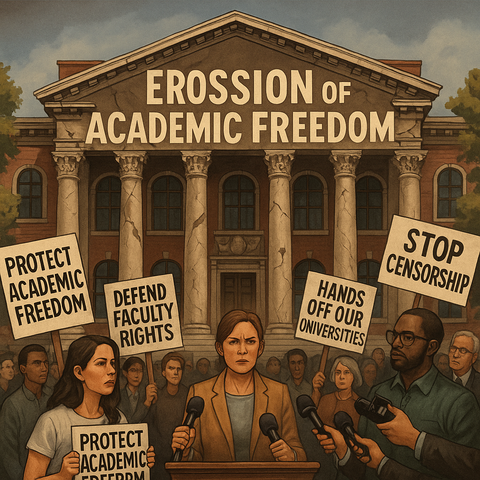Human + Machine: How AI Is Transforming the Math Classroom
Input
Modified
Customizing Mathematics Instruction for Every Learner Supporting Educators with Smart Tools and Real-Time Insight The Future of Math Education Is Human-AI Collaboration
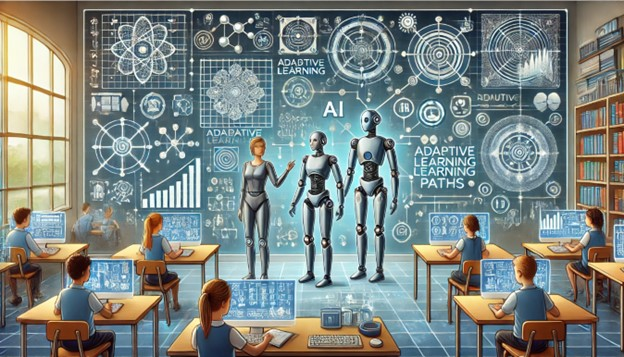
Customizing Mathematics Instruction for Every Learner
Artificial Intelligence (AI) is no longer a futuristic jargon in the field of education. It has evolved into a dynamic force that is revolutionizing the way in which students learn and instructors teach, particularly in the subject that is frequently perceived as the most resistant to technological change: mathematics. The traditional math classroom is transforming into a more personalized, engaging, and data-driven environment as schools increasingly rely on adaptive learning platforms, intelligent tutoring systems, and generative AI tools.
However, the emergence of AI in the field of education does not necessarily signal the end of the human teacher. Conversely, the burgeoning consensus among educators, researchers, and technologists is unequivocal: AI is most effective when it collaborates with educators, rather than replacing them. Classrooms are being revolutionized by this human-AI partnership, which is also reducing teacher burnout and creating new opportunities for profound, differentiated instruction. Personalization, instructional support, and human-AI synergy are the three primary areas in which AI is transforming math instruction.
Perhaps the most transformative potential of AI in the field of math education is its capacity to offer personalized learning experiences on a large scale. AI tools are designed to adapt to the unique learning styles, skill levels, and requirements of each student in real time, in contrast to conventional one-size-fits-all approaches. This guarantees that advanced learners are adequately challenged, while struggling students receive the necessary support.
Adaptive learning platforms, such as DreamBox and MATHia from Carnegie Learning, monitor students' problem-solving methods and dynamically adjust the difficulty of questions. In order to identify patterns, knowledge deficits, and strengths, these systems evaluate accuracy, speed, and approach. The outcome is an educational experience that is more reminiscent of personalized tutoring than collective instruction. The feedback loop that AI provides enables students to remain on track and develop confidence by enabling immediate course correction.
In the interim, Khan Academy's AI features and Zearn offer students interactive lessons and progress tracking, enabling teachers to designate content that is customized to each student's progress. Teachers serve as strategic advisors, while students are encouraged to assume responsibility for their education through these platforms. Students cultivate independence, motivation, and mathematical proficiency by receiving pertinent material at the appropriate time.
AI tools also serve a distinctive function in dual-language or multilingual classrooms. Teachers such as Ana Sepulveda in Dallas employ AI to facilitate "translanguaging," which involves assisting students in establishing connections between mathematical vocabulary in different languages. Students enhance their conceptual comprehension and self-assurance by employing ChatGPT to identify terminology that is applicable in both Spanish and English. This method ensures that language does not impede mathematical achievement and respects linguistic diversity.
Photomath, Socratic, and Mathway are among the AI tools that are equally significant in that they assist students in resolving and comprehending mathematical problems outside of the classroom, thereby acting as tutors-on-demand. Empowering students to autonomously troubleshoot while reinforcing key concepts, these applications offer step-by-step explanations and guidance. Such instruments can have a substantial impact on the academic performance of students who do not have consistent access to in-person assistance.
Although AI provides substantial advantages for students, it is equally transformative for educators. AI significantly alleviates the administrative burden that frequently contributes to teacher burnout by automating routine duties, including grading, lesson planning, and student progress tracking.
Artificial intelligence (AI) has been implemented by educators such as Matthew Karabinos to develop assignments that are consistent with frameworks such as Peter Liljedahl's Building Thinking Classrooms. Karabinos generates higher-order thinking math tasks that align with specific learning objectives in minutes, a procedure that previously required hours, using a custom-trained GPT. The classroom is rendered more dynamic and student-centered as a result of these thinking tasks, which foster collaboration, inventive problem-solving, and the articulate expression of students' reasoning.
MagicSchool, Eduaide, and Claude are examples of generative AI tools that enable educators to construct differentiated assessments, personalize practice problems, and modify lesson plans in real time. These tools not only simplify the preparation process but also allow educators to allocate more time to observing, mentoring, and intervening in the areas where they are most required. For example, a teacher can employ AI to create problem variations that are tailored to the varying learning levels of a single class, thereby improving comprehension and inclusivity.
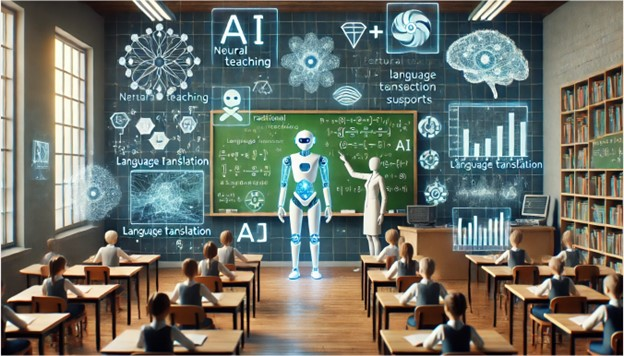
Supporting Educators with Smart Tools and Real-Time Insight
Teachers are notified when students are experiencing difficulty by live dashboards and real-time analytics platforms such as LiveLab (integrated into MATHia). Rather than identifying learning deficits after an assessment, educators can intervene immediately to address misunderstandings, customize support, and monitor progress. This capacity is essential in large classes, where it is both difficult and increasingly necessary to provide individual attention.
Additionally, AI technologies alleviate the cognitive burden on educators, thereby facilitating the more efficient management of large classrooms. Khanmigo and MATHia are tools that automate the process of grouping students by aptitude or learning style, thereby guaranteeing that small group instruction is data-driven and targeted. This frees up time for professional development, collaboration with colleagues, and innovation in pedagogy.
AI enables educators to reclaim the creative and relational aspects of teaching that are frequently obscured by bureaucracy by redirecting the focus from logistics to learning. It revitalizes their capacity to create educational experiences that are meaningful.
Rather than replacing instructors, AI is assisting them in the development of what are referred to as "learning architects"—educators who are central to the growth of students while creating dynamic, technology-enabled learning environments. The demands of a swiftly changing educational landscape necessitate the development of human-AI synergy, which is not only feasible but also becoming increasingly essential.
Teachers possess emotional intelligence, mentorship, and social awareness that are not capable of being replicated by algorithms. They establish long-term relationships that cultivate resilience and confidence by adjusting their tone and approach in response to subtle signals of student disengagement or emotional struggle. In contrast, AI provides computational speed, data analysis, and consistency that are unmatched by humans at a large scale. They collaborate in a partnership that merges automation with insight and data with empathy.
Real-world success tales are already being generated by this combination. Squirrel Ai employs artificial intelligence (AI) systems to generate personalized learning paths by analyzing more than 10 billion student data points. Meanwhile, human educators provide enriching, compelling instruction and mentoring. The efficacy of targeted feedback and human interaction is underscored by the fact that this collaborative model has elevated student accuracy from 78% to 93%.
Similarly, in classrooms that employ MATHia, AI pinpoints the precise manner in which students approach mathematical problems, and instructors leverage this knowledge to develop interventions that are more effective. This detailed feedback allows educators to transcend superficial correctness and address the underlying misconceptions.
The value of this collaboration is beginning to be recognized by both students and teachers. The Walton Family Foundation reports that 71% of educators and 65% of pupils anticipate that AI tools will be indispensable for success in both the classroom and the workplace. According to Pew Research, 73% of educators currently perceive AI's potential or balanced benefits in the field of education.
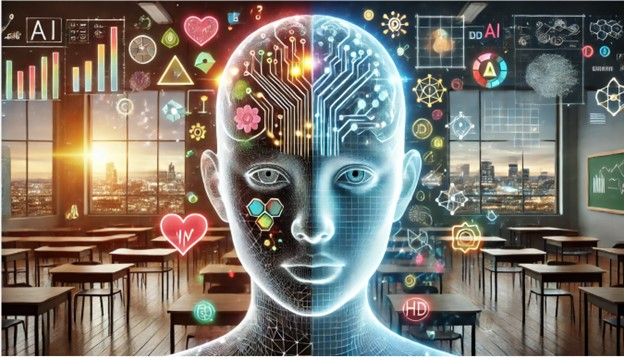
The Future of Math Education Is Human-AI Collaboration
Nevertheless, the future necessitates a deliberate approach. Teacher training continues to be a significant impediment: more than two-thirds of mathematics educators have not received professional development on the integration of AI into their instruction. Educator training and AI infrastructure investments must be made by institutions to guarantee equitable access for all pupils, particularly those in underfunded schools. Innovation must be founded on equity.
Schools must also encourage the literacy of AI among both students and instructors. This encompasses comprehending the operation of AI, acknowledging its constraints, and employing it in an ethical and responsible manner. The benefits and hazards of AI may be misunderstood or misused in the absence of a fundamental understanding. Ensuring that AI enhances rather than disrupts the learning process necessitates a well-informed teaching force.
Ultimately, the future of math education will not be constructed by AI alone; rather, it will be shaped by empowered educators who employ AI as a tool to enhance the student experience, personalize instruction, and deepen learning. In this vision, the chalkboard is not replaced by AI; rather, it is expanded.
The metamorphosis of math classrooms through AI is no longer a distant possibility; it is already in progress. AI is providing educators with unparalleled resources to address the diversified requirements of today's students, including personalized learning platforms, real-time analytics, intelligent tutoring systems, and lesson-generating assistants. But the true power of these instruments is derived from the human touch—the adaptability, care, and insight of teachers.
We must transcend simplistic narratives of replacement and adopt a partnership paradigm in order to fully realize the potential of AI in education. AI can assist in the development of classrooms that are more responsive, inclusive, and effective than ever before through strategic investment, deliberate training, and a focus on equity. Collaboration, compassion, and a profound human element are the hallmarks of the future of mathematics education.
Teachers are not becoming obsolete. They are evolving into indispensable facilitators of a learning experience that is profoundly humanized, more intuitive, and intelligent—an experience that AI could never achieve independently.



